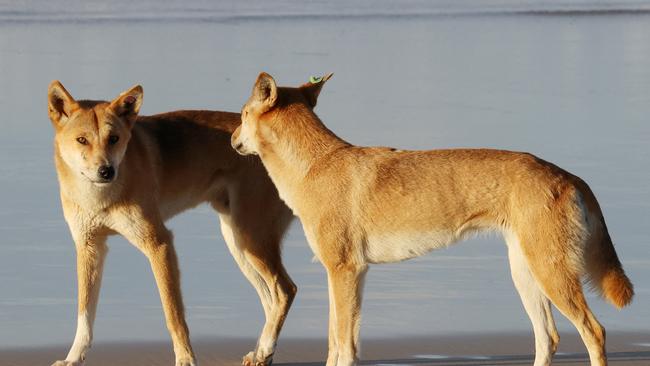University of Sunshine Coast study highlights genetic dingo issue
A university study has found dingoes are under threat and at risk with researchers calling for urgent control programs before euthanising.

Sunshine Coast
Don't miss out on the headlines from Sunshine Coast. Followed categories will be added to My News.
A Sunshine Coast-led study has found dingoes are under threat and at risk to more diseases, with researchers calling for lethal control programs to consider “genetic consequences” before killing an animal.
A University of Sunshine Coast (USC) study has found that Australia’s largest land predator carries higher loads of harmful and recessive mutations compared to other canines.
According to the study, the genetic diversity of dingoes, also known as wongari, is 36 per-cent lower than highly inbred domesticated dog breeds and almost four times lower than wolves.
In reaching the findings, the study took saliva samples from two wild dingoes, from Western Australia and New South Wales, as well as a captive dingo.
The samples were compared to a data set from a previous study involving nine dingoes, as well as data taken from wolves, village dogs and breed dogs from across the globe.

The comparison of data revealed dingoes are more prone to being impacted by genetic diseases, due to the small original population.
Research Fellow at USC Dr Manoharan Kumar said the modern dingo population originated from a small number of founding individuals.
“The study found five lines of evidence for bottlenecks from the small original population, accelerating the loss of genetic variation in dingoes,” Dr Kumar said.
Senior Lecturer in Genetics at USC Dr Sankar Subramanian hailed the findings as crucial in unlocking the evolutionary history of dingoes.
“Our study has found genomic evidence suggesting that the founding population size of dingoes was much smaller than that of wild wolves and domesticated dogs,” Dr Subramanian said.
Dr Subramanian added that lethal control programs on dingoes should take genetic consequences into consideration.
“For example, aerial baiting programs which realise a 90 per cent population knockdown may initiate further bottlenecks and exacerbate the low genetic diversity and high mutational loads of targeted dingo populations with detrimental consequences,” he said.

According to the Department of Environment and Science, three dingoes on K’gari have been euthanised as a result of high risk incidents since the start of the year.
During this same time period, there have been 28 reported high risk incidents involving dingoes on K’gari.
The dingo population on K’gari, estimated to be at 200, is considered significant because they have rarely interbred with domestic or feral dogs.
Hailed as Australia’s only native canine, it is believed that dingoes first arrived on the continent from South East Asia, up to 11,000 years ago.
The dingo is a threatened species.





